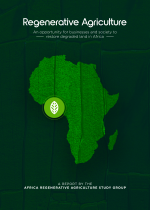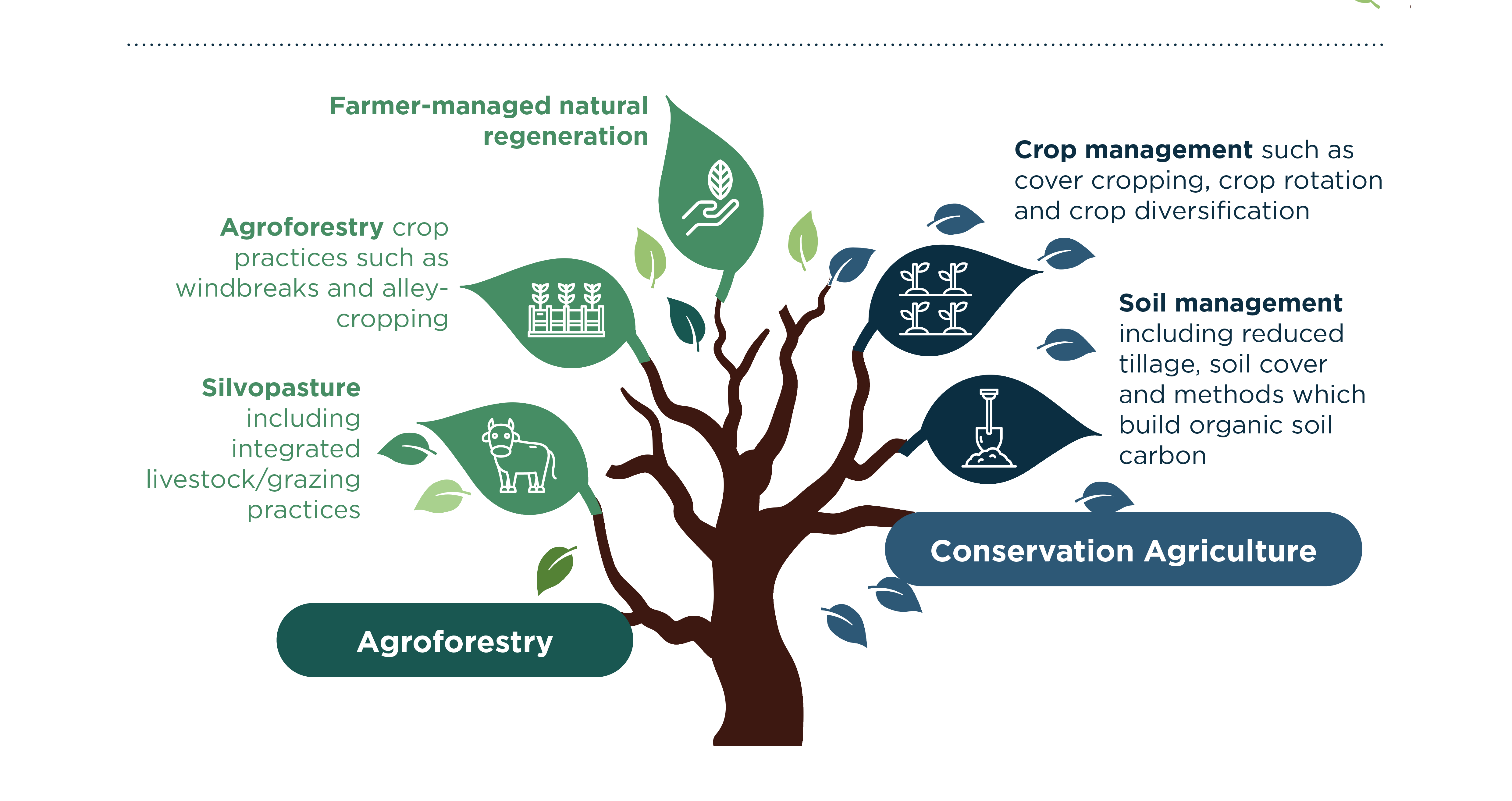Regenerative agriculture works: New research and African businesses show how
A new report reveals strong evidence that regenerative agriculture works, showing surprising returns. Regenerative agriculture secures supply, strengthens livelihoods and sequesters carbon, delivering on the promise of Nature-based Solutions.

Photo: Vivid Economics / istock
Podcast: Regenerative agriculture’s $70bn potential for Africa
Recent research has shown that land degradation has had, and will have, severe impacts on crop production and supply chains in Africa. Regenerative agriculture has been found to be an important part of the solution.
A new report commissioned by IUCN and the UNFCCC High Level Champions and steered by a working group of African partners ahead of Climate COP26 in Glasgow provides compelling, quantitative evidence of the positive impacts of regenerative agricultural practices. This report presents the case for regenerative agriculture to play a key role within broader land restoration activities and its potential to benefit smallholder farmers, business and society. It demonstrates the benefits of a transition to practices such as agroforestry and soil management as methods to boost yields, improve human nutrition and livelihoods, supporting soil and ecosystem health. The report also looks ahead with detailed forecasts up to the year 2040.
 Photo: Vivid Economics / IUCN
Photo: Vivid Economics / IUCN
Girding the robust economic and social models that form the basis of the research are case studies from a range of agribusinesses, including African-owned agribusiness, on their practices and engagement with smallholder farmers, and the positive impacts that regenerative agriculture has already yielded.
What is regenerative agriculture?
Broadly, it encompasses both conservation agriculture and sustainable agroforestry techniques as well. So, these can be practices such as crop diversification, shade tree planting, use of cover crops, reduced tillage and many more. And these techniques really improve crop yields for farmers through increased soil nutrients and organic content, which reduces the need for fertilizers, but they also reduce soil erosion, improve water retention and have biodiversity benefits as well. So all of these reduce costs for farmers as well. These techniques could add around US$ 70 billion per year of gross value to farmers." –Cassandra Austen, report co-author
 Photo: Vivid Economics / IUCN
Photo: Vivid Economics / IUCN
Regenerative agriculture works
Modelling shows a conservative increase of yields by 13% in 2040 if regenerative agriculture is implemented versus a business-as-usual approach, and studies suggest this could be as high as 40% in the future. Or even higher when considering future innovations. And the boost to economies would create as many as 5 million new full time jobs by 2040 in farming, processing and supportive industries.
The economic boons for farmers and the surrounding economies from regenerative agriculture are projected to increase food security through reduction of prices and accessibility of varied and increased caloric intake. A more stable food supply promotes prosperity.
What’s in it for the farmers?
Hundreds of millions of smallholder farmers collectively produce 80% of the food in sub-Saharan Africa. Household income for these smallholder farmers could rise up to US$ 150 per year.
By 2040, through just a 50% adoption of regenerative agriculture across Africa, farmers could see:
- 30% reduction in soil erosion
- Up to a 60% increase in water infiltration rates
- 24% increase in nitrogen content
- 20% increase in carbon content, or higher depending on the intervention – and not just topsoil (this is huge as soil is the second biggest storehouse of carbon, after oceans). The benefits are even greater when shrubs and grasses are promoted through agroforestry.
What is the carbon capture potential?
This new work brings to light the significant potential of regenerative agriculture to address climate change impacts through carbon sequestration. It is estimated that regenerative agriculture can sequester large amounts of carbon dioxide, making it a cost-effective solution to combat climate change. By 2040, this additional carbon benefit alone could equate to 4.4 GtCO2e (almost 10 times South Africa’s annual emissions). Another 106 MtCO2e per year could be sequestered by restoring degraded land with the inclusion of agroforestry systems.
Regenerative agriculture secures supply, strengthens livelihoods and sequesters carbon. We now know what needs to be done. We urgently need to scale these practices ensuring that the interests of smallholder farmers are central, with mechanisms put in place, which directly reward farmers who transition to these practices. This needs both targeted and redirected public and private investment.
The estimated return on investment from regenerative agriculture in Africa outlined in this report is very encouraging. Of course, it will not be realised at a meaningful scale without the buy-in of millions of smallholder farmers. Agribusinesses and governments need to step up their investments and their supportive policies to give agency to the small farmers who, collectively, can make big changes. Maybe then, the report’s best case scenario will become a reality.” – Elizabeth Nsimadala, President, the Pan African Farmers Organization



